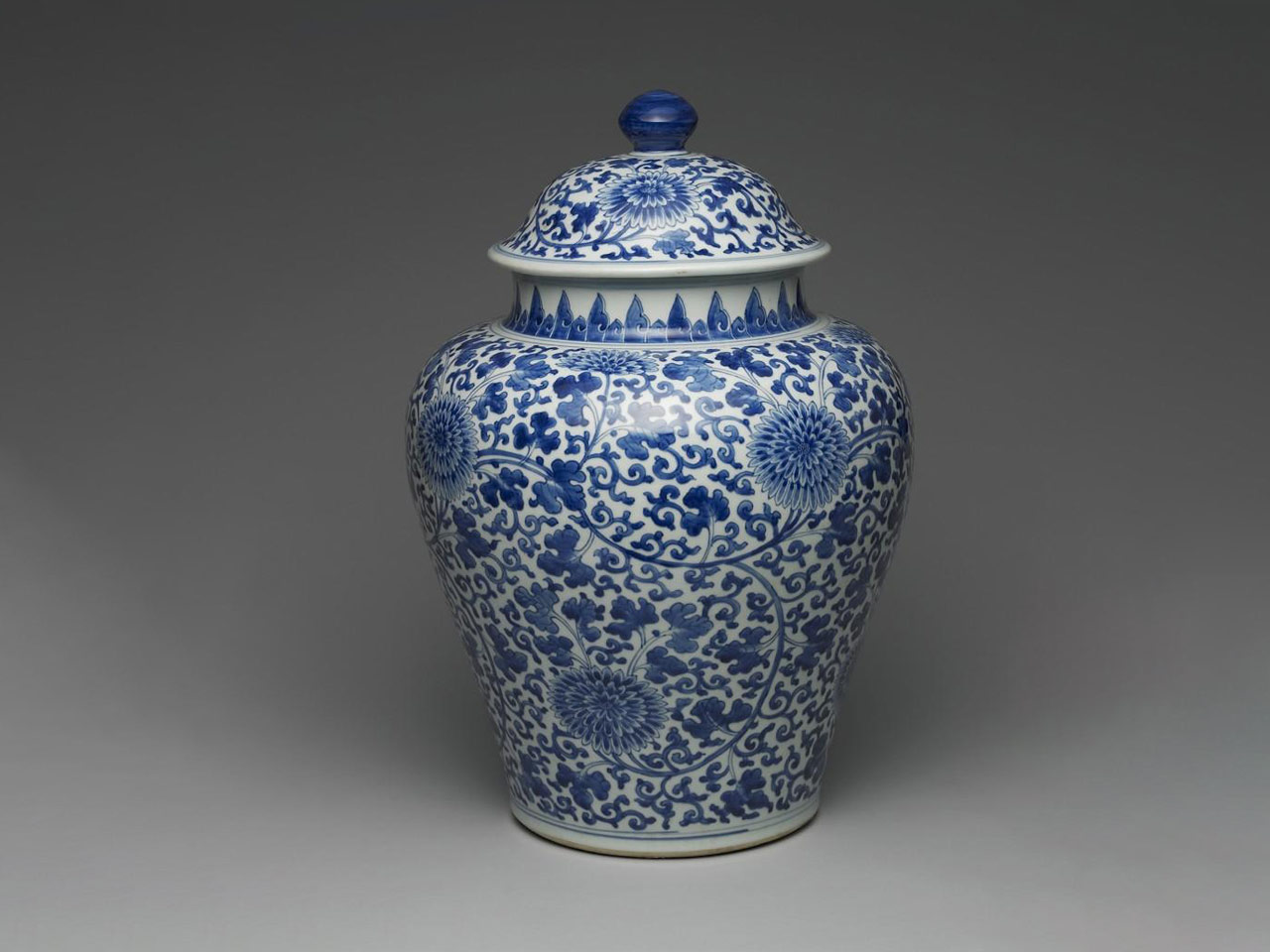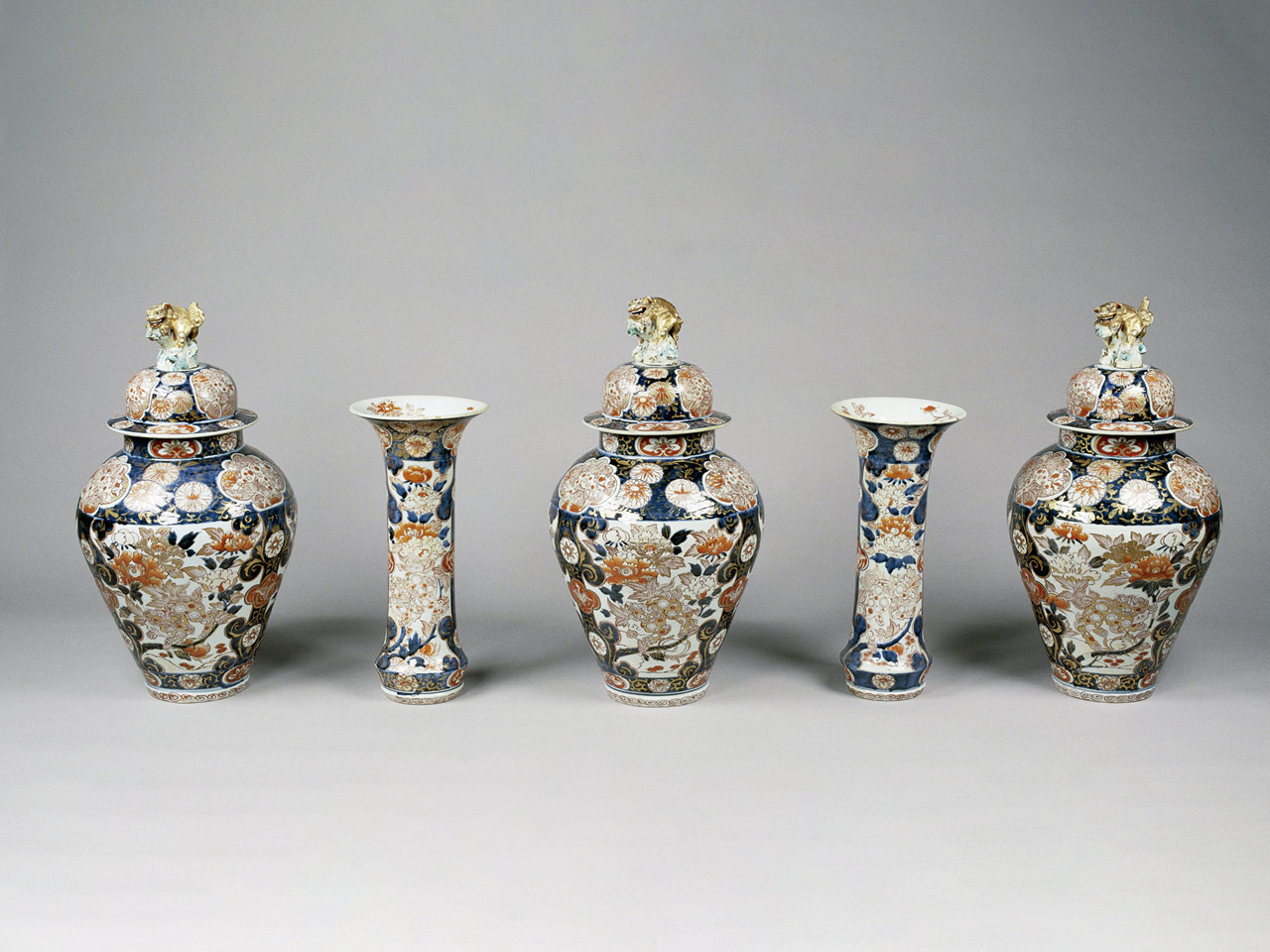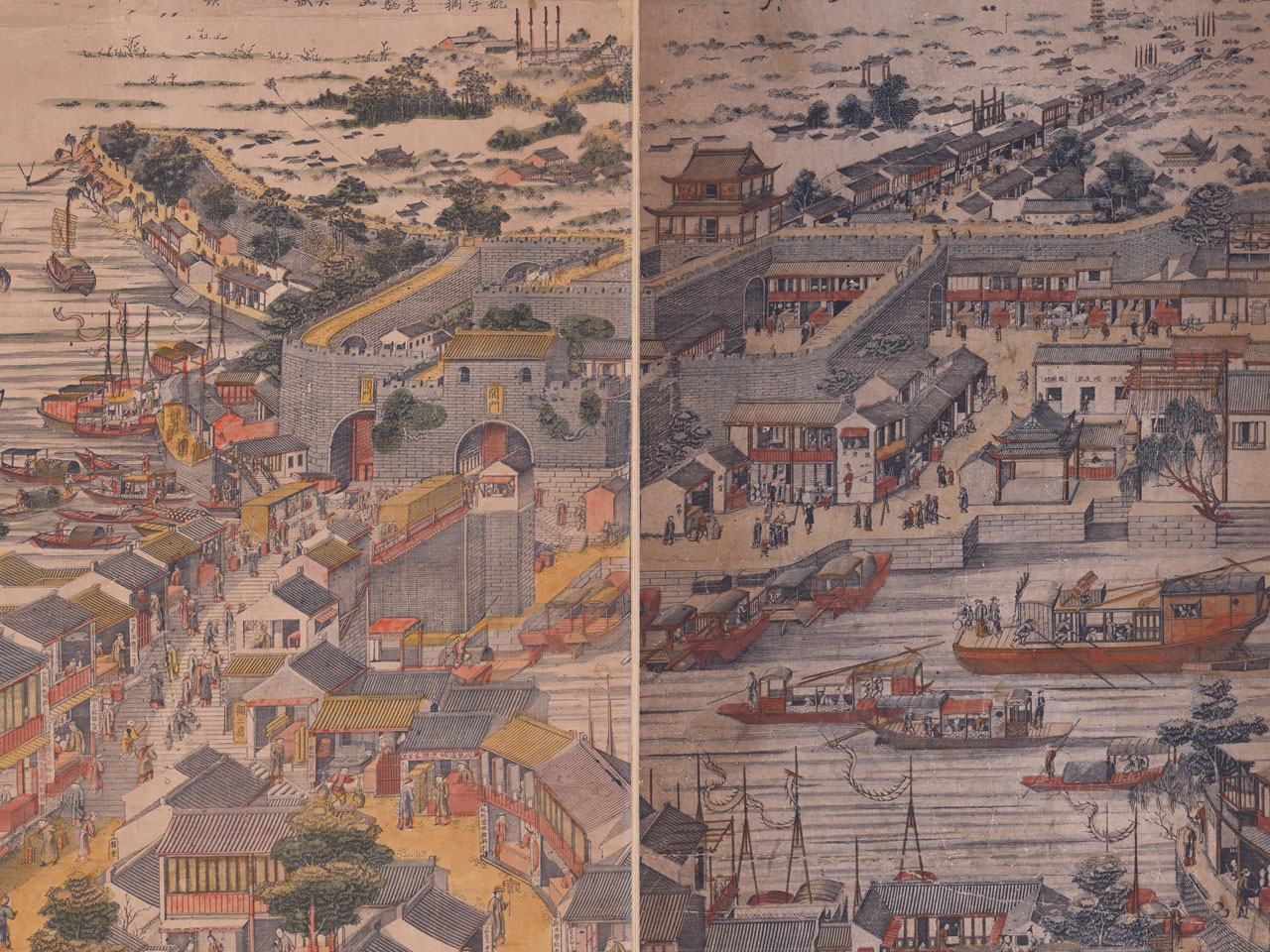The encounters and collisions between East and West in the 17th century had contributed to mutual understanding and exchanges even further. The change of perception to the world, the transition and transliteration of cultures, and the imitation and creation among craft works had become the most exceptional aspect of the exchanging process. The geographical knowledge brought by the West had altered the perception of landscape and transportation, thus it had also encouraged the new configuration of the globe that delivered the innovated worldview. The use of 'perspective technique' in prints at the time had reflected the acknowledgment and application of Western painting techniques, moreover, to fuse the East and the West in one scene. Porcelain of Jingdezhen from China and Arita ware from Japan had both traveled great distance to Europe, on one hand had effected on the manufacture and development of main workshops in Europe and Middle East, and formed a rising new trend of ceramic ware. On the other hand, large porcelain vases and jars with ornamental purpose had also become interior decorations, which were placed inside residences of European royalties and nobles to demonstrate their financial strength. This trend had manifested the unique feature of an era.
Lidded jar with intertwined chrysanthemum decoration in underglaze blue
- Qing dynasty, second half of the 17th century to first half of the 18th century

Garniture
- Arita Ware
- Japan, 1700-1725
- Collection of the Rijksmuseum
Not all polychrome Japanese porcelain was produced by the Kakiemon potters or in their style. The larger part was in a bolder style and is known in Europe as Imari ware, its name deriving from the place where the ceramics for export were stored and from where they were shipped. The basic colors in the Imari palette are blue (underglaze contrary to the overglaze blue in Kakiemon porcelain), red and gold, sometimes supplemented with other enamels. The design with the large motifs leaving almost no white surface visible is markedly different from the Kakiemon pieces. Imari was less costly and exclusive and very popular in Europe.
Gate Chang of Suzhou
- Print, Qing dynasty (1644-1911)
- Collection of the Umi-Mori Art Museum
Three hundred and Sixty Professions
- Print, Qing dynasty (1644-1911)
- Collection of the Umi-Mori Art Museum
The left piece 'Gate Chang of Suzhou' has the year mark 'Jiayin' (1734), and it is a portrayal of commercial prosperity at Jinchang, Suzhou. The composition is connected to the right piece 'Three hundred and Sixty Professions' and the two formed a complete set. The western perspective technique is applied and uses ink and wash painting for the dominant visuals with the addition of colours. The characteristics of copperplate-etching painting are visible in the clouds and bushes.

